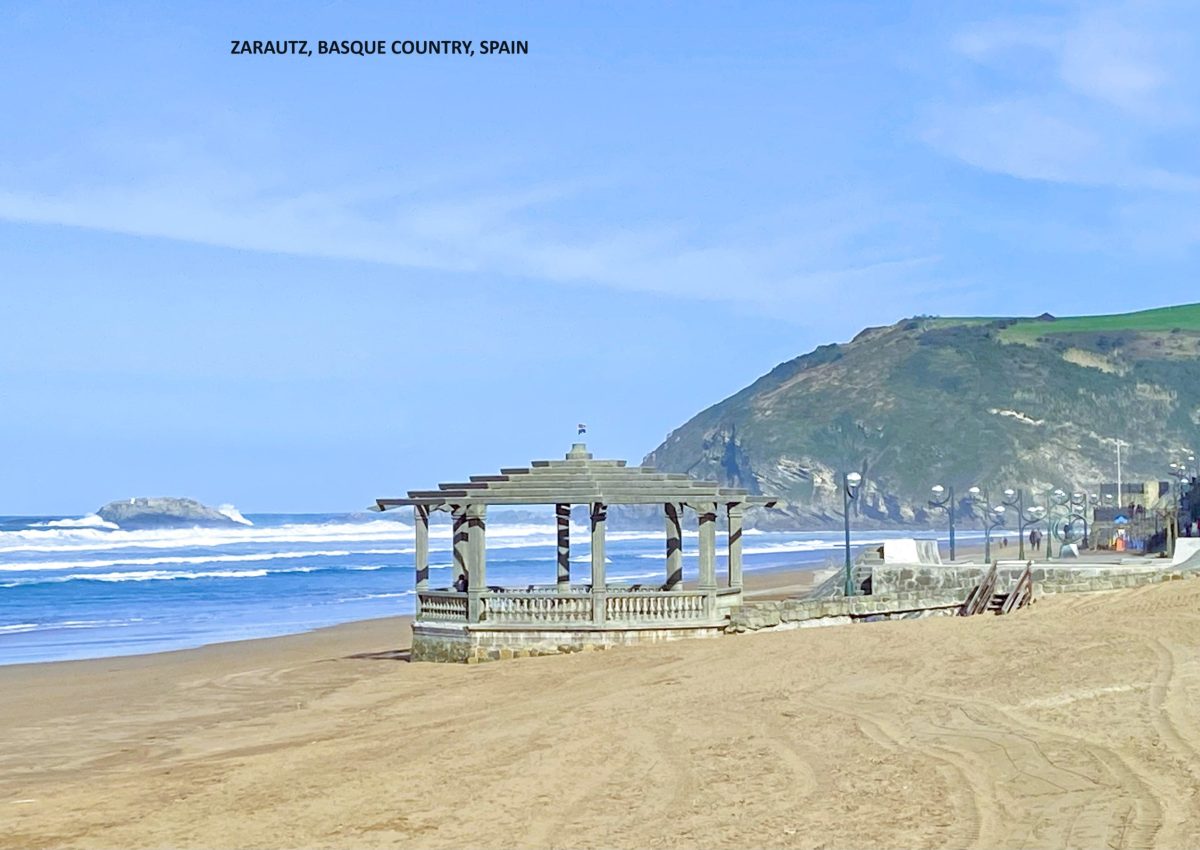This day was to be all about Prosecco wine. It started early in the morning in the delightful little town of Asolo, one of Italy’s famous Borghi* and; then took us up and around the Prosecco Hills. It continued along much of the Prosecco Road (Conegliano to Valdobbiadene) and; concluded with a wine tasting session in the capital of the Prosecco wine world, Valdobbiadene, and me becoming a convert to Prosecco – well, to the good ones.
Asolo was founded in Roman times but reached it’s zenith while under the control of Venice and not long after the Venetians had ‘persuaded’ Caterina Cornaro (Queen of Cyprus, Jerusalem and Armenia) to cede Cyprus to Venice and take exile in Asolo. It is generally understood that the town prospered as a direct result of Caterina Cornaro moving to Asolo and living in what has since become known as the Castello della Regina Cornaro. That would have been during the period 1489 to 1509. In 1509, the League of Cambrai (at war with Venice) attacked Asolo and forced her to flee and she died in Venice the following year.
We parked the Van in a large (free, except at weekends) car park and walked up into the old town through the arch on the Via Forestuzzo. This followed on to the pretty arcaded Via Browning (named after the English poet Robert Browning) with it’s handful of artisan style shops, directly to the centre of the old town. The Piazza Garibaldi is marked as the old town centre on the local map but in truth there is no central square; the centrepoint is the Fontana Maggiore (fountain) which sits just beyond the Hotel Duse amidst a couple of cafe bars, Asolo’s cathedral (the Duomo di Santa Maria Assunta) and the Civic Museum, which is connected to the Castello della Regina Cornaro. It’s a pretty spot.
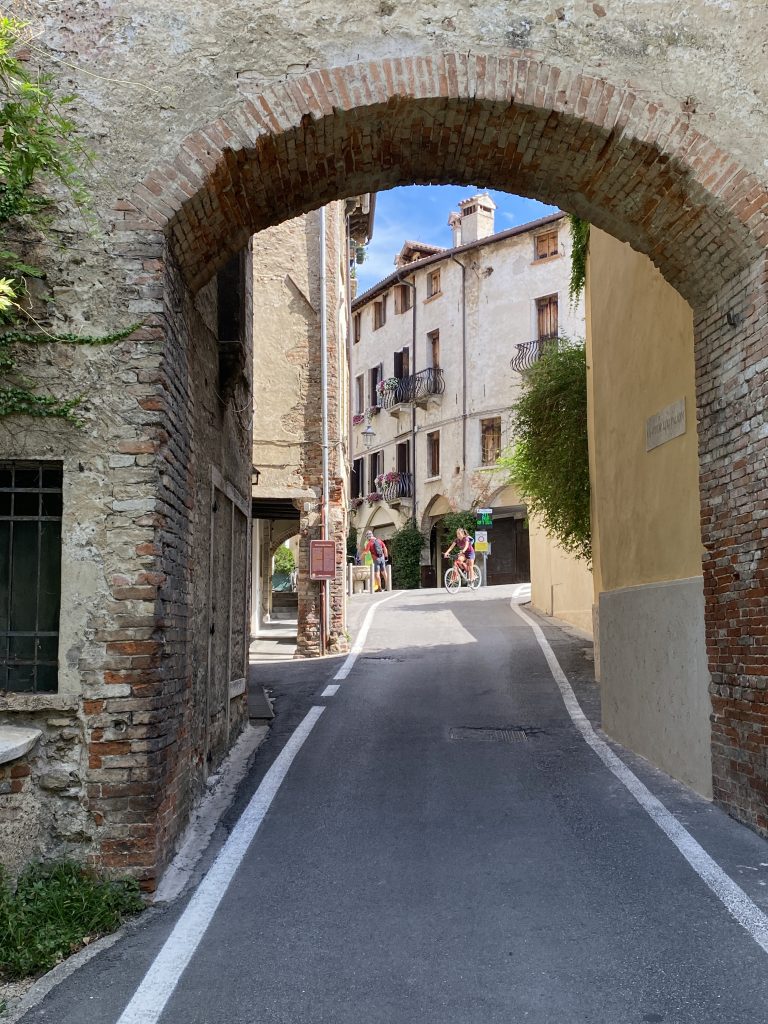
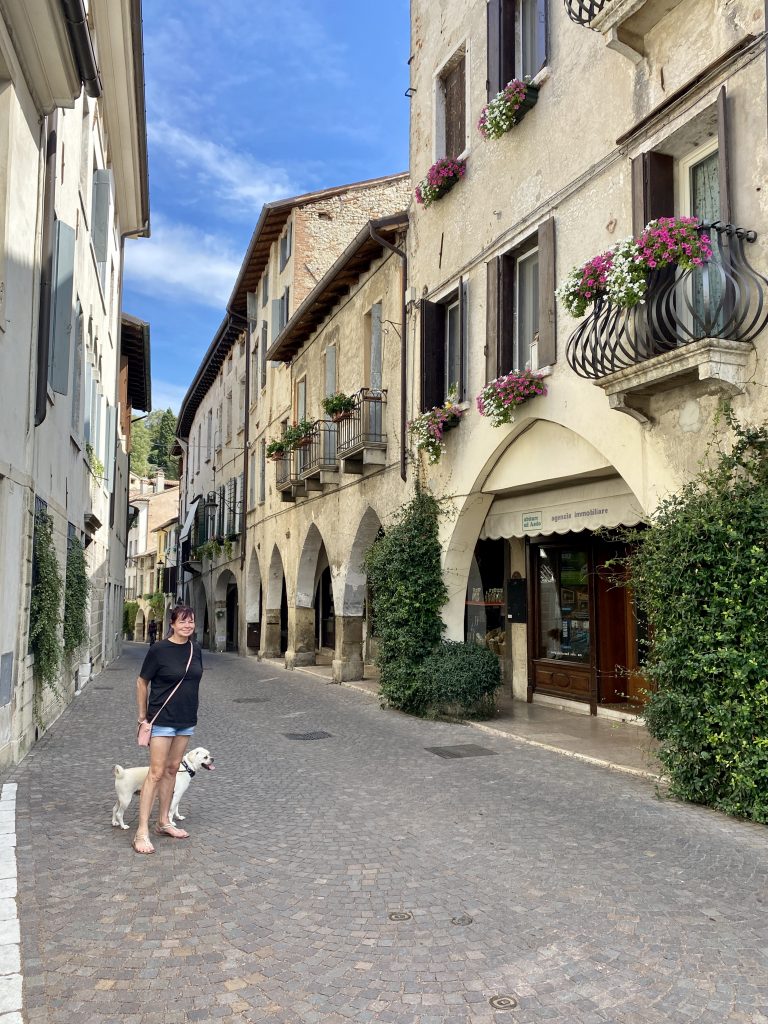
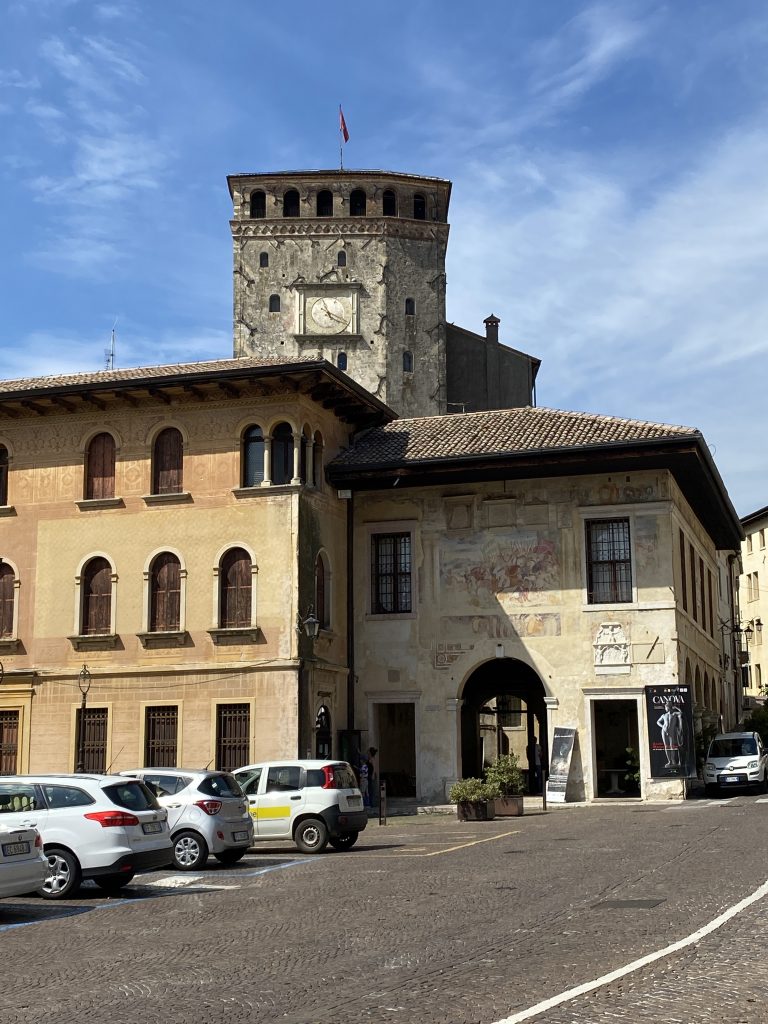
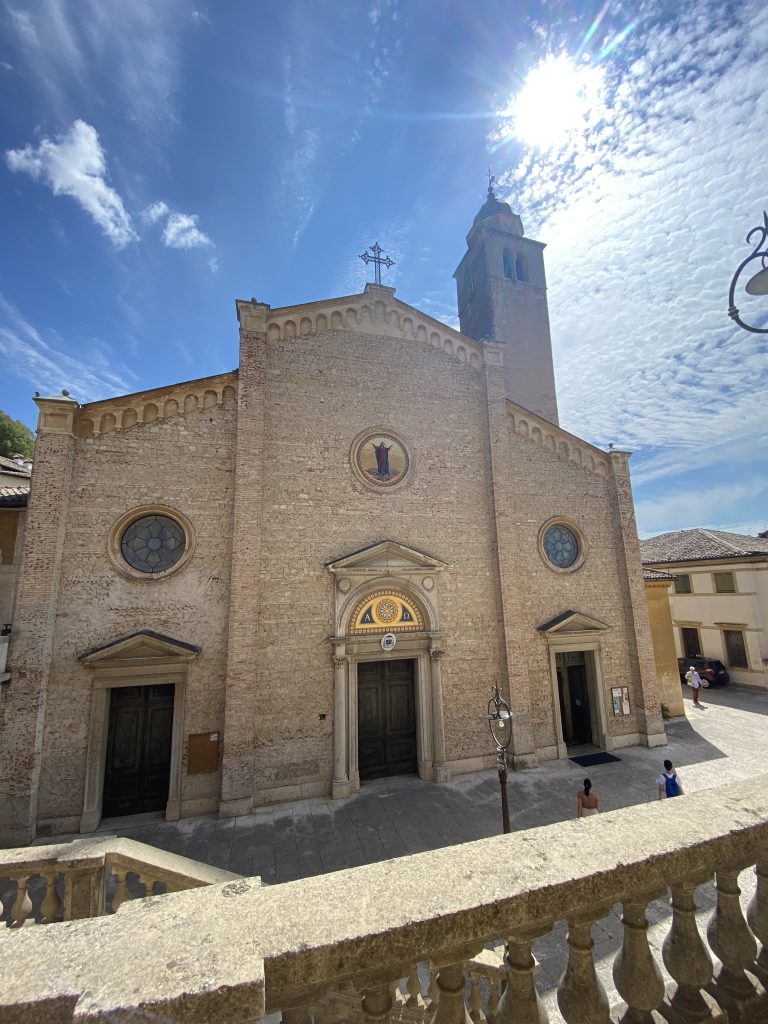
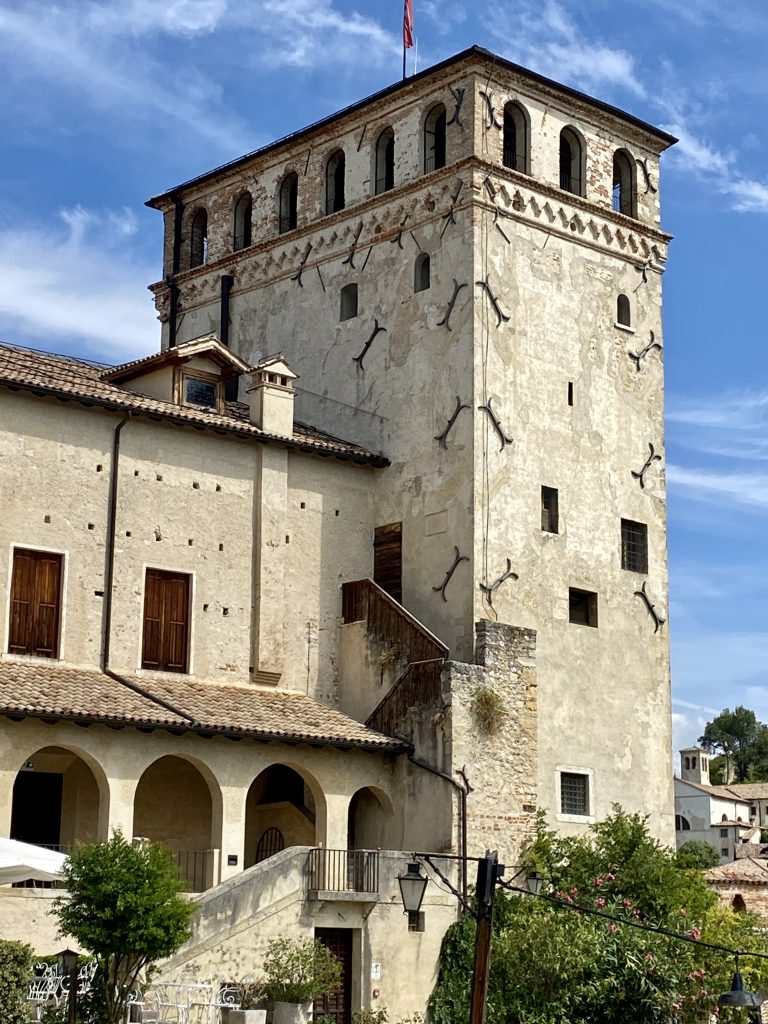
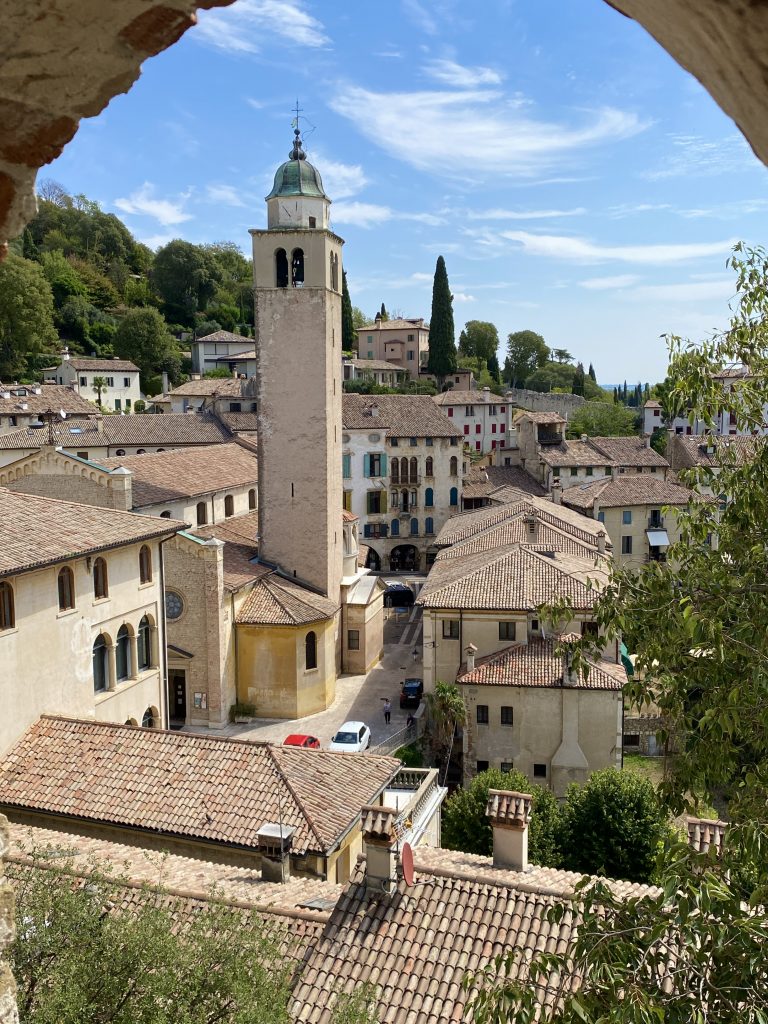
Asolo is a small compact town which can easily be seen within a day and it is very picturesque but the real delight is it’s calm and tranquility. After a brief look around the town and, in particular, the Castello della Regina Cornaro we were content to relax in the shade outside a little restaurant on the ‘Piazza Garibaldi’ and take brunch – the local cheese, ham and of course a Prosecco.
Some would argue that we should have walked up Mount Ricco, on the edge of the town, to the 12th/13th century Rocca Fortress for it’s views over Asolo and the broader Veneto countryside but; this day was about chilling and sipping chilled Prosecco so, we gave it a miss. Asolo had that effect on me. We were both content to sit peacefully in the shade, nursing our wine and watching the world go by although; in Asolo the world moved very slowly. This was a week day (no weekend tourists from Venice)… Why tire ourselves out exploring?
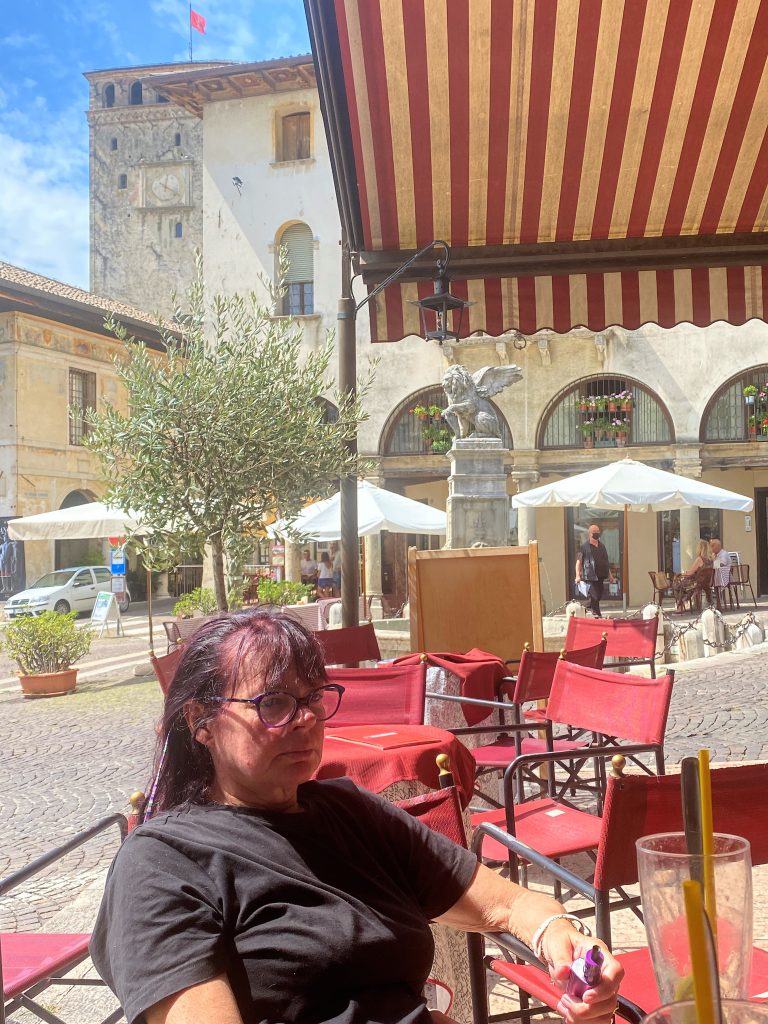

It was a slow walk back to the Van, notwithstanding that it was all downhill, and we took time to view some of the finer, more impressive villas on the way.
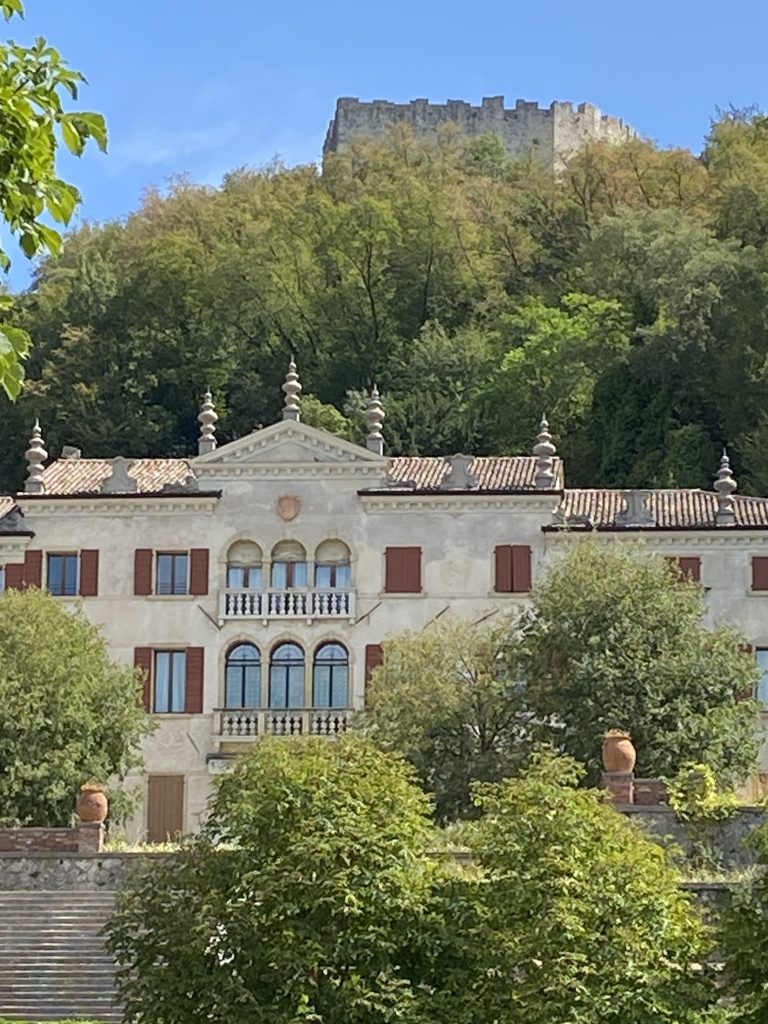

Quite a few personalities have lived in or at least visited Asolo for extended periods and many have left their mark. There are a series of steel plaques carved into the pavement towards the top of the Via Forestuzzo, recognizing some of those personalities – most especially Freya Stark (writer and explorer), Robert Browning (poet) and Eleonora Duse (Italian actress) but others, Ernest Hemingway (writer and journalist), Wilma Neruda (Violinist) and even Princess Margaret (younger sister to ERII) have also sought peace in Asolo.
We really had to tear ourselves away from the town… but on to Valdobbiadene.
* Borghi – The literal translation of ‘Borgo’ into English is ‘Village’. Borghi is the plural. So far as I can determine “I Borghi piu belli d’Italia” is a list of 313 beautiful villages in Italy as identified by the National Association of Italian Municipalities to help promote small Italian centres. The Association’s criteria for admission would appear to be “a fascinating small Italian town, generally fortified and dating back to the period from the Middle Ages to the Renaissance… Whether Medieval or Renaissance, sea or mountain, rural or lake, all… certified Borgos represent the best of Unknown Italy…”. This initiative is perhaps similar to the French ‘Les Plus Beaux Villages de France’.

